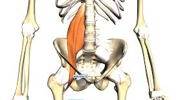The evolution of precancerous pancreatic lesions into pancreatic cancer is fueled by a cell nuclear receptor that is triggered by high-fat diets and synthetic compounds found in illegal athletic performance enhancers, according to research from the University of Michigan Rogel Cancer Center.
Strategies to prevent and treat pancreatic ductal adenocarcinoma, a particularly fatal form of cancer with an increasing incidence, are urgently needed. About 55 to 80 percent of persons over 40 are thought to have these low-grade pre-cancerous silent pancreatic lesions, which are the primary cause of the majority of occurrences of pancreatic cancer.
Pre-cancerous pancreatic lesions in mice that are similar to those reported in humans had greater levels of the transcriptional receptor peroxisome proliferator-activated receptor-delta (PPARδ), according to a study led by Imad Shureiqi, M.D., and published in Nature Communications.
PPARδ controls a broad range of important genes whose expression has an impact on biological processes like lipid metabolism and the development of cancer. Pancreatic cancer develops from precancerous lesions much more quickly when PPARδ is activated.
Prior to shifting his research to the cancer center in 2020, Shureiqi worked at the University of Texas’ MD Anderson Cancer Center where he conducted the majority of this study, particularly in collaboration with Xiangsheng Zuo, M.D., Ph.D.
“We became interested in studying the effects of PPARδ on pancreatic carcinogenesis because our prior observations showed that PPARδ strongly promoted other gastrointestinal cancers. But there’s very limited information about PPARδ’s role in pancreatic cancer’s development,” said Shureiqi.
Excessive exposure to specific ligands, both natural and synthetic, is associated with PPAR activation. High-fat diets contain some naturally occurring ligands that have been linked to a higher risk of pancreatic cancer in both human and animal models. Fatty acids that are PPAR’s natural ligands are added to high-fat diets.
We became interested in studying the effects of PPARδ on pancreatic carcinogenesis because our prior observations showed that PPARδ strongly promoted other gastrointestinal cancers. But there’s very limited information about PPARδ’s role in pancreatic cancer’s development.
Imad Shureiqi
Other artificial PPAR ligands, such as Cardarine (GW501516), are present in sports supplements designed to improve stamina and performance. Pharmaceutical companies initially developed GW501516 to promote the body’s increased utilization of fat and cure non-cancerous disorders like obesity and hyperlipemia.
Given its potential for procancerous side effects, the pharmaceutical development of GW501516 and other comparable strong PPARδ agonists for medical usage has long since been halted. Despite the fact that research on PPARδ’s role in colorectal cancer dates back to 1999 and that pharmaceutical companies have stopped developing synthetic PPARδ ligands, unrestricted online marketplaces continue to sell drugs like Cardarine.
Young people are the target audience for most advertisements that promise to increase muscle endurance and burn fat. According to Shureiqi, initial studies revealed that these synthetic ligands reduced mouse weariness.
This news made its way to major media outlets, who nicknamed it “exercise in a pill.” “Unfortunately, what the media didn’t address was the dark side of PPARδ. Like muscle cells, synthetic PPARδ ligands also help cancer cells get more energy from fats as a fuel source,” he said.
“It’s shocking to me,” Shureiqi continued. “Animal models repeatedly show the strong relationship between PPARδ and cancer promotion in the case of colorectal cancer and stomach cancer. Now we’re gaining more information about how it affects pancreatic cancer.”
Particularly those that are simple to target, crucial variables that accelerate the development of silent pancreatic precancerous lesions into pancreatic cancer are still poorly understood. Even though the majority of these pre-cancerous lesions do not progress to malignancy, comprehension of their course is essential for developing therapies to address the increased incidence of pancreatic cancer.
The results of this study suggest that consumption of PPARδ natural activators, such as those found in high-fat diets, or synthetic ones, such as Cardarine, may raise the risk of pancreatic cancer in persons with silent precancerous lesions, even those that are low-grade.
A potential strategy to stop the evolution of precancerous lesions into pancreatic cancer may involve the future development of potent drugs to suppress PPARδ activation. For those who have a high prevalence of pre-cancerous pancreatic lesions, restricting exposure to high-fat foods may also be an option.
However, for the time being, the most urgent issue is the widespread usage and sales of those synthetic PPARδ activating drugs that enhance athletic performance.
“This new information should alert individuals to the potential serious health risks from using synthetic PPARδ agonists,” Shureiqi said. “We’re trying to spread the message that’s using those substances is not a good idea. It might enhance muscle endurance, but it also enhances cancer’s ability to use energy and grow.”
















